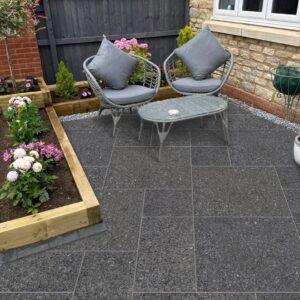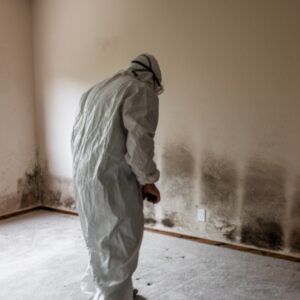Building a pool deck is more than just a finishing touch for your backyard, it’s about safety, comfort, and long-term enjoyment. If you live in Dallas, making the right choice is even more important because of the city’s hot summers, heavy sun exposure, and soil conditions that can shift with rain and drought. Two of the most popular materials for pool decks are concrete and pavers. Each comes with its own set of advantages and trade-offs. The best option depends on your budget, style, and long-term plans for your backyard.
Below, we’ll break down the differences between concrete and pavers so you can make an informed decision for your Dallas pool deck.
1. Cost and Installation
One of the first things homeowners consider is cost.
Concrete is usually the more budget-friendly option. A basic poured concrete deck can cost around $6–$12 per square foot, though prices go up if you choose decorative options like stamped or stained concrete. Installation is fast, a professional team can pour a slab in just a few days, which saves time and labor costs.
Pavers, on the other hand, cost more upfront, typically $10–$25 per square foot, depending on whether you choose simple concrete pavers or premium natural stones like travertine. Laying pavers takes longer because each piece must be placed carefully over a prepared base. It’s more labor-intensive, but the result is a beautifully finished deck that can last for decades.
If you’re curious about the exact difference in cost and want to see whether it’s cheaper to go with concrete or pavers, check out this guide on Deck or Pave Around Pool.
Summary:
- Concrete = lower cost, faster installation.
- Pavers = higher cost, more work, but offers long-term value and design options.
2. Durability and Repair
Durability is another key factor, especially for Dallas, where temperature swings and heavy sun can take a toll.
Concrete is strong but not immune to cracking. Over time, changes in temperature, shifting soil, or poor installation can lead to cracks. Repairing concrete can be tricky—patching is possible, but it’s hard to match the color and texture of the original deck. Concrete also needs to be sealed every 2–3 years to protect it from sun, water, and pool chemicals. Despite these challenges, a well-installed concrete deck can last decades.
Pavers offer a different type of durability. Since they are individual units laid over a base, they have some flexibility. If the ground moves, the pavers can shift slightly without cracking like a solid concrete slab would. If one paver gets damaged, it’s easy to replace just that piece, which makes maintenance simpler and less expensive over time. High-quality pavers can last 25–50 years with proper care.
Summary:
- Concrete is durable but prone to cracks; repairs can be complicated.
- Pavers are flexible, easy to repair, and very long-lasting.
3. Safety and Comfort
In Dallas, summer temperatures can soar above 100°F, so heat absorption and slip resistance are important considerations.
Concrete tends to get hot, especially if it’s dark or dense. Lighter-colored concrete and reflective sealers can help reduce heat. Plain concrete can also become slippery when wet, though textured finishes and broomed surfaces can improve traction.
Pavers naturally provide better traction due to their textured surface and the gaps between individual pieces. They also tend to stay cooler underfoot. Certain materials, like travertine or limestone, stay surprisingly cool even under the blazing Texas sun. The small gaps between pavers allow air to circulate, helping dissipate heat more efficiently.
Summary:
- Concrete can get hot; slip resistance depends on surface treatment.
- Pavers are naturally cooler and more slip-resistant.
4. Maintenance Over Time
Maintenance requirements are different for each material.
Concrete needs cleaning and resealing every few years, and any cracks that appear may require patching or resurfacing.
Pavers need occasional attention to the joints, as the sand between them can erode over time. Weeds or moss may also grow in the joints, although using polymeric sand during installation can prevent this. On the upside, if a paver becomes damaged, you can replace it individually instead of fixing a large section of the deck.
Summary:
- Concrete = low-effort cleaning, but resealing and crack repair are needed.
- Pavers = some joint maintenance required, but individual repairs are easy.
5. Aesthetics and Design Options
Design is another area where pavers shine. They come in a wide range of shapes, colors, and materials, allowing for endless creative patterns—herringbone, basketweave, circular layouts, and more. If you want a high-end, custom look, pavers give you flexibility and a luxury feel. You can also expand your deck in the future and easily match the existing pattern.
Concrete can also be customized. Stamped, colored, or exposed aggregate finishes can mimic stone, brick, or tile. However, once poured, concrete is harder to change, and repairs may not match the original texture or color perfectly.
Summary:
- Pavers = premium look, flexible design, easy to expand.
- Concrete = good options, but less flexible once installed.
6. Longevity and Resale Value
When considering resale value, pavers often come out ahead. Their long lifespan, easy repairs, and aesthetic appeal can add value to your home. Well-maintained paver decks can last decades, often longer than concrete.
Concrete is still a solid investment, especially with proper installation and maintenance. A decorative concrete deck can look great and perform well for years, though it may not have the same premium appeal as pavers.
Summary:
- Pavers = high resale value, long-lasting.
- Concrete = solid investment, slightly lower premium feel.
7. Suitability for Dallas Climate
Dallas’s climate makes durability and heat performance very important:
- Heat: Concrete can get very hot, while pavers’ air gaps and certain materials help keep the surface cooler.
- Soil movement: Dallas clay soil expands and contracts with moisture. Concrete slabs can crack under soil movement, whereas pavers can shift without damage.
- Sun exposure: Both materials benefit from sealers to prevent sun damage.
- Maintenance: High heat and sun can stress surfaces, so the ability to easily replace or repair parts of your deck is a real advantage.
Summary:
Pavers generally perform better in hot, shifting conditions, though properly installed concrete can also hold up well.
8. How to Decide
Here’s a simple guide for Dallas homeowners:
| Priority | Best Option |
| Lower upfront cost and fast installation | Concrete |
| Long-term durability and easy repairs | Pavers |
| Cooler surface and better slip resistance | Pavers |
| Custom design and luxury look | Pavers |
| Minimal maintenance effort | Concrete |
| Increase resale value | Pavers |
9. Trade-offs and Risks
- Concrete: Prone to cracking; repairs can be tricky; resealing is required.
- Pavers: Can shift or settle if not installed correctly; joint sand may wash out; weeds can grow if not maintained.
- Maintenance: Concrete needs resealing; pavers need occasional joint care.
Both materials can perform well if installed correctly. Choosing a reputable contractor and using the proper base materials makes a huge difference.
10. Final Thoughts
For Dallas pool decks, pavers often offer the best long-term combination of durability, safety, and design flexibility. They stay cooler underfoot, are easy to repair, and can increase your home’s value.
Concrete remains a solid option, especially for homeowners who want a lower-cost, fast-installation deck with decent durability. Decorative concrete can mimic premium materials and still provide a beautiful, functional pool deck.
No matter which material you choose, make sure to discuss soil conditions, drainage, and sealing options with your contractor. How your deck is installed will affect its performance more than the material alone.
https://easybacklinkseo.com/




